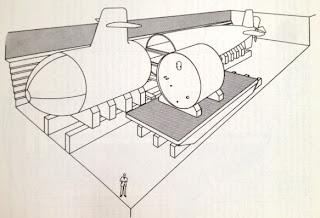This website has been tracking the developments concerning corruption (including bribery for contracts) and faked certification of parts in the South Korean nuclear industry since July of this year; you can click here to see the original post on this topic on Atomic Power Review, which detailed the developments as then released dating back through June 2013.
In that post, I asked a number of questions; two can now be answered. In terms of "will parts with faked certificates actually work," the answer appears in at least one case to be "no," and "do parts supplied under these bribery-induced contracts meet specs," the answer also appears to be "no." Much else has developed in the interim.
Let's detail developments in recent times, since it was announced that about 100 people had been indicted overall in the scandal (which wasn't reported on this site.)
•In early October, it was found that eight nuclear cable suppliers were price fixing; a fine was imposed and a case referred to prosecutors. See this link.
•The cable makers were found to have been paying very high dividends - and it was noted that the fine amount was insignificant to deter the practice when compared with the profit derived from a successful bid. See this link.
•A large number of faked testing results were discovered in connection with investigation into the corruption scandal, including 277 used to cover parts at operating plants. See this link.
•Suspect cables have failed inspections at two reactor plants. See this link.
•On October 17 it was revealed that the Korean Government would sue LS Group, which owns JS Cable - the major culprit in supply of suspect cables. See this link.
•Another piece hinted that LS Group might sue Korea Hydro & Nuclear Power. See this link.
•On October 22, Korea Hydro & Nuclear Power confirmed it would sue LS Group for very significant amounts in damages. See this link.
Some of the reporting linked above includes the revelation that the easy movement of public officials to nuclear power or utility companies (and back) is part of the problem, and a moratorium period of three years during which this transfer cannot occur has been suggested. No action has been definitively taken on this measure, however, as the major focus at this time is discovery of the extent of possible threat due to truly undocumented and untested parts and discovery of the extent of the corruption that led to this entire episode in the first place.
As always, I will continue to update on this situation periodically as warranted.
1:40 PM Eastern 10/25/2017
ATOMIC POWER REVIEW
In that post, I asked a number of questions; two can now be answered. In terms of "will parts with faked certificates actually work," the answer appears in at least one case to be "no," and "do parts supplied under these bribery-induced contracts meet specs," the answer also appears to be "no." Much else has developed in the interim.
Let's detail developments in recent times, since it was announced that about 100 people had been indicted overall in the scandal (which wasn't reported on this site.)
•In early October, it was found that eight nuclear cable suppliers were price fixing; a fine was imposed and a case referred to prosecutors. See this link.
•The cable makers were found to have been paying very high dividends - and it was noted that the fine amount was insignificant to deter the practice when compared with the profit derived from a successful bid. See this link.
•A large number of faked testing results were discovered in connection with investigation into the corruption scandal, including 277 used to cover parts at operating plants. See this link.
•Suspect cables have failed inspections at two reactor plants. See this link.
•On October 17 it was revealed that the Korean Government would sue LS Group, which owns JS Cable - the major culprit in supply of suspect cables. See this link.
•Another piece hinted that LS Group might sue Korea Hydro & Nuclear Power. See this link.
•On October 22, Korea Hydro & Nuclear Power confirmed it would sue LS Group for very significant amounts in damages. See this link.
Some of the reporting linked above includes the revelation that the easy movement of public officials to nuclear power or utility companies (and back) is part of the problem, and a moratorium period of three years during which this transfer cannot occur has been suggested. No action has been definitively taken on this measure, however, as the major focus at this time is discovery of the extent of possible threat due to truly undocumented and untested parts and discovery of the extent of the corruption that led to this entire episode in the first place.
As always, I will continue to update on this situation periodically as warranted.
1:40 PM Eastern 10/25/2017
ATOMIC POWER REVIEW


















